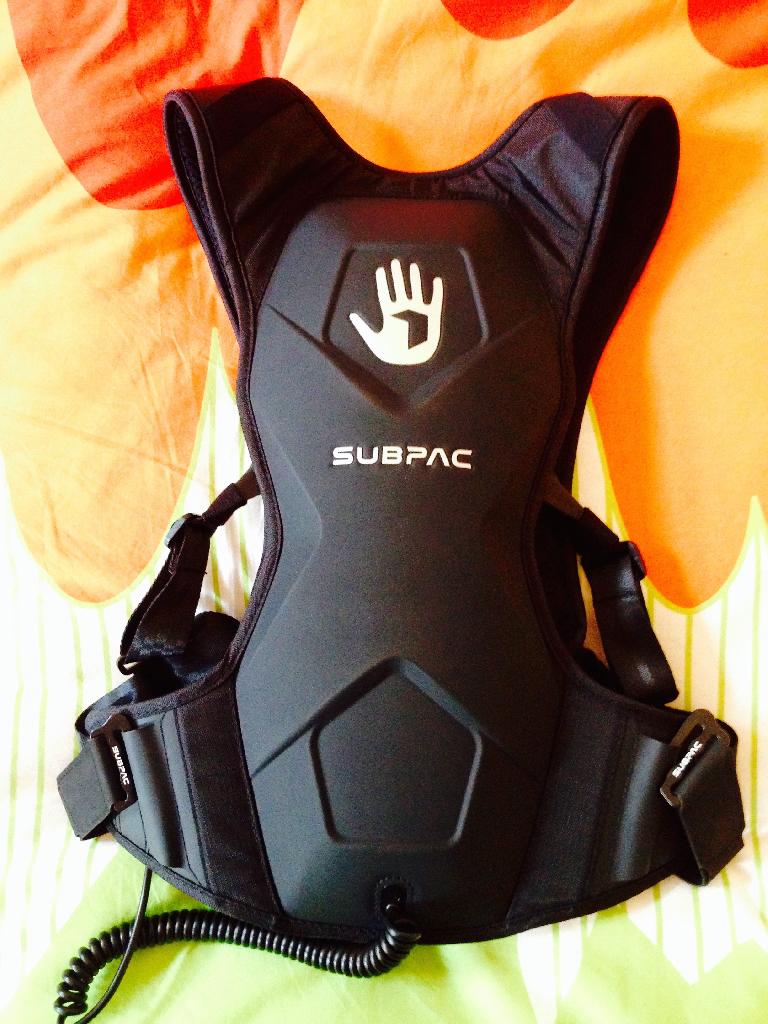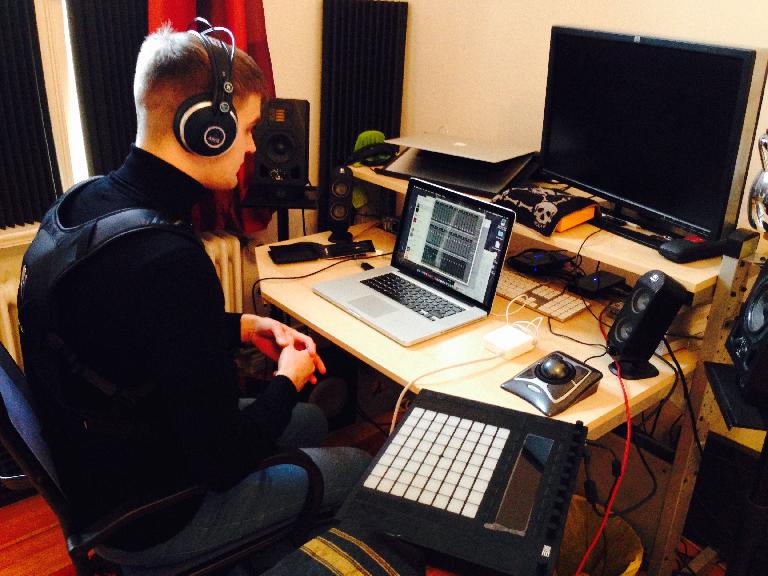The Los Angeles-based company SubPac recently released the M2, a wearable backpack version of their groundbreaking sub-bass tactile audio system. For those of you unfamiliar, check out the specs and details that Rounik Sethi supplies in a previous AskAudio article on the SubPac M2. We've also reviewed the SubPac S2 here.
The supposition of a sub-bass backpack strapped to my body… admittedly, I was skeptical but eager when asked to review it. As a novelty item that will enhance music listening, gaming, watching movies, silent discos and the sort, I can most certainly picture how this plausible. However, being a sound designer, producer, and live electronic musician, I wanted to put the M2 to the test and see if it really is worth all the hype for professional audio production.
Regarding functionality for the audio professional, SubPac claims the benefits include:
- Accurate tactile monitoring of low frequencies—Frequency response from 5 Hz–130 Hz.
- Save Money—A subwoofer, room treatment, sound proofing, etc., is costly. Accurate bass monitoring with a SubPac will save you money.
- External Noise—The SubPac allows you to feel club level/intense bass without noise complaints.
- Room Issues—The SubPac takes the guesswork out of mixing the low end by connecting you directly to bass. The room you are in and how it affects the bass response is no longer an issue.
- Portability—The SubPac gives you a full range, portable production solution anywhere, anytime.
- Translation—How does your bass translate between sound systems? “What does my mix sound and feel like in a club or on a gaming rig?”
- Inspiration–By physically feeling your music, your level of inspiration will be heightened–in the studio, on the plane, in your hotel room and on the stage.
Background—Test Environment
For production, sound design and pre-performance programming, I mostly work from my home studio that includes a pair of small Adam A3X near-field monitors and an Adam Sub7 subwoofer. My room is rather large, mostly untreated, untuned and I have neighbors that I don’t like to annoy all too often. Seemingly, I’m the perfect candidate for the SubPac since I can only use my sub for short periods, not too loudly and never late night.
Despite my studio limitations, I’ve learned how to mix fairly accurately as I’ve spent time learning how my setup relates to the rest of the world. I quickly came to the realization that, as with any tool, you need to understand how the SubPac works and translates.
To start, spend some time dialing in the SubPac and calibrating it to meet your needs. It’s fairly straightforward as there is only one control for intensity. Follow the instructions on the SubPac website:
Crossover Feeling
As I mentioned previously, the crossover for the SubPac is quite wide: 5 Hz–130 Hz. My Sub7 has a variable crossover frequency control, which I normally set around 75 Hz for tighter bass frequency response. It took some time getting used to just how much low end is accounted for on the SubPac. If you’re not careful with the intensity control, you’re liable to seriously scramble your organs!
There is no crossover frequency control on the SubPac. However there is a workaround that’s accomplished by routing your signal through multiple outs on your audio interface and filtering the output to the SubPac. I preferred this method as it more accurately represented the low frequency range that I am more accustomed to working with.
Detailed video on how to set this up in Ableton Live:
Test Phase
I ran several tests on myself and two other electronic music producers/performers here in Berlin… our conclusions were more or less the same.
Without using a filter for the crossover, we referenced the M2 sitting in front of my near-field monitors. We did the same test with professional headphones. In both cases, the lows were well represented and the kick was punchy and easily distinguishable from underlying heavy baselines.
Although, the SubPac performed effectively in both cases, we preferred using headphones over nearfields. We reasoned that it had something to do with the closed listening environment, which made us feel that the overall experience was more cohesive and connected. The other preferred method is using the SubPac while listening to the nearfields and a subwoofer. In this case, the listener is able to hear and feel simultaneously to what’s happening with the low end.
Without a doubt, it’s fascinating and informative to feel what the bass is physically doing to your body…. Most certainly an insightful, worthwhile experience. With this said, however, we found it a sensation to get accustomed to. A subwoofer’s output is omnidirectional and moves through air. The SubPac is a tactile component that hugs your body. Comparing the two is much like comparing apples and oranges. The bass response from the SubPac is more like what you expect to feel in a loud banging club rather than in a studio environment. In a club, the bass is normally hitting you in the gut or chest, the M2 is vibrating your upper back. At one point, we flipped the SubPac around to our chest and found this to be a bit more realistic. It’s worth mentioning though that the M2 can be a bit tiring after extended periods if you’re not used to getting physically pummeled by bass frequencies.
Conclusion
If you’re making dance music and don’t have access to listening to your tracks in a club environment, the SubPac is certainly a useful, informative tool. Live performers and DJs alike may find it worthwhile for clearer monitoring. Sound designers can enjoy tuning low frequencies by feel rather than listening alone. I particularly found it beneficial for tuning kick drums and bass as I could physically feel the low frequency oscillations as I made adjustments.
My fellow test partners and I agree that we don’t deem the M2 a replacement for an actual subwoofer. Instead consider the SubPac a unique tool that provides additional tactile feedback. With that being said, we only used the M2 for a relatively short time and have been producing with subwoofers for years. It all comes down to your personal taste and needs. Most importantly, it’s about understanding and taking the time to learn how such tools translate to the outside world. If you’re interested in purchasing a SubPac, I highly recommend trying one out for yourself.
Price: $399
Pros:
- Useful additional tool for audio production and performance
- Tactile solution for bass management
- Allows you to feel club level/intense bass without noise complaints
- Wearable, lightweight and portable
- Simple to use and setup.
Cons:
- Bit on the expensive side. Comparable to the price of a decent small subwoofer (Adam Sub7).
- Fit of the backpack version rides high for my taste. Would like to feel more on the lower back or possibly even across the chest or stomach. (S2 version might distribute differently)
- Can be physically tiring after extended use.
- No crossover controls on the unit for tighter bass response





 © 2024 Ask.Audio
A NonLinear Educating Company
© 2024 Ask.Audio
A NonLinear Educating Company
Discussion
Want to join the discussion?
Create an account or login to get started!